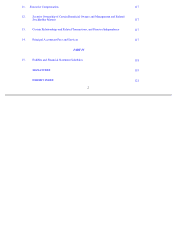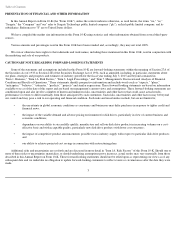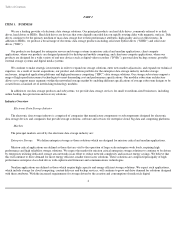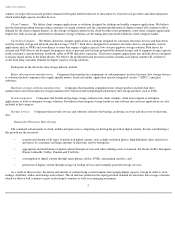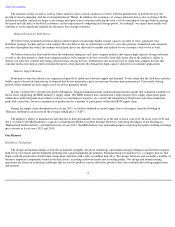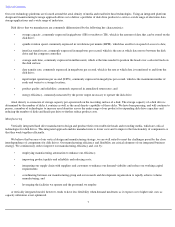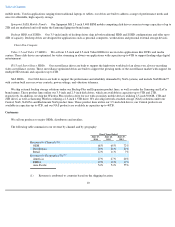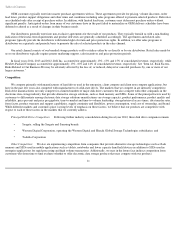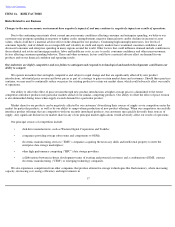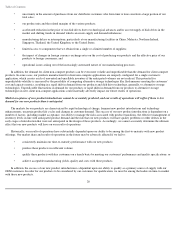Seagate 2013 Annual Report Download - page 15
Download and view the complete annual report
Please find page 15 of the 2013 Seagate annual report below. You can navigate through the pages in the report by either clicking on the pages listed below, or by using the keyword search tool below to find specific information within the annual report.
Table of Contents
Price Erosion. Historically, our industry has been characterized by price declines for disk drive products with comparable capacity,
performance and feature sets ("like-for-like products"). Price declines for like-for-like products ("price erosion") have been more pronounced
during periods of:
• economic contraction in which competitors may use discounted pricing to attempt to maintain or gain market share;
• few new product introductions when competitors have comparable or alternative product offerings; and
• industry supply exceeding demand.
In fiscal years 2013 and 2014, we believe the HDD industry's capacity to manufacture HDDs exceeded demand. However, following
industry consolidation during fiscal year 2012, the HDD industry has maintained improved pricing discipline resulting in benign price erosion in
fiscal years 2013 and 2014.
Disk drive manufacturers typically attempt to offset price erosion with an improved mix of disk drive products characterized by higher
capacity, better performance and additional feature sets and/or product cost reductions.
Product Life Cycles and Changing Technology. Success in our industry has been dependent to a large extent on the ability to balance the
introduction and transition of new products with time-to-volume, performance, capacity and quality metrics at a competitive price, level of
service and support that our customers expect. Generally those disk drive manufacturers that are able to introduce new products first benefit from
improved product mix, favorable profit margins and less pricing pressure until comparable products are introduced. Changing technology also
necessitates on-going investments in research and development, which may be difficult to recover due to rapid product life cycles and economic
declines. Further, there is a continued need to successfully execute product transitions and new product introductions, as factors such as quality,
reliability and manufacturing yields become of increasing competitive importance.
Seasonality
The disk drive industry traditionally experiences seasonal variability in demand with higher levels of demand in the second half of the
calendar year. This seasonality is driven by consumer spending in the back-to-school season from late summer to fall and the traditional holiday
shopping season from fall to winter.
Research and Development
We are committed to developing new component technologies, products and alternative storage technologies. Our research and
development focus is designed to bring new products to market in high volume, with quality attributes that our customers expect, before our
competitors. Part of our product development strategy is to leverage a design platform and/or subsystem within product families to serve
different market needs. This platform strategy allows for more efficient resource utilization, leverages best design practices, reduces exposure to
changes in demand, and allows for achievement of lower costs through purchasing economies. Our advanced technology integration effort
focuses disk drive and component research on recording subsystems, including read/write heads and recording media, market-specific product
technology and technology focused towards new business opportunities. The primary purpose of our advanced technology integration effort is to
ensure timely availability of mature component technologies to our product development teams as well as allowing us to leverage and coordinate
those technologies in the design centers across our products in order to take advantage of opportunities in the marketplace. During fiscal years
2014, 2013 and 2012, we had product development expenses of approximately $1,226 million, $1,133 million and $1,006 million, respectively,
which represented 9%, 8% and 7% of our consolidated revenue, respectively.
12


